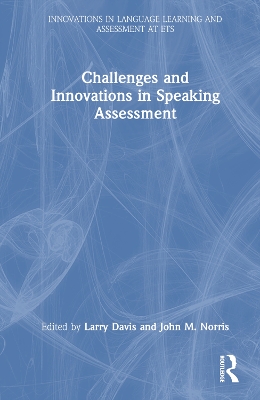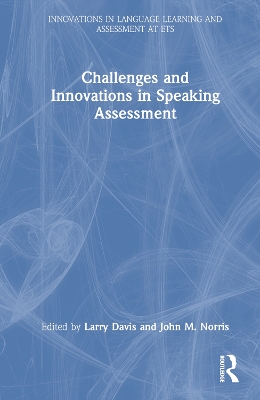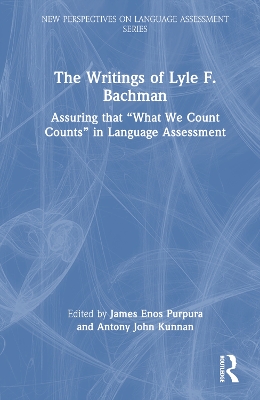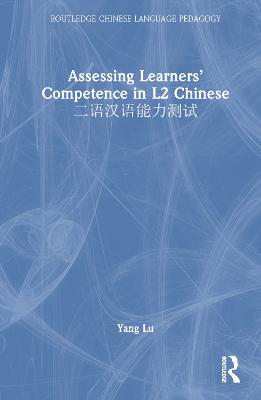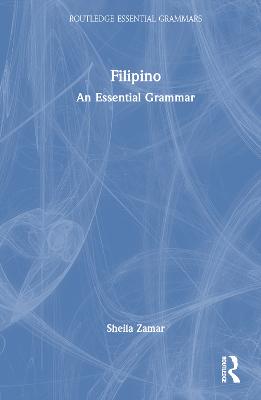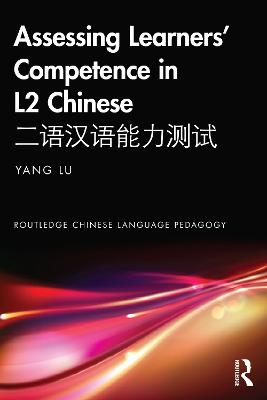Identity of Chinese Heritage Language Learners in a Global Era
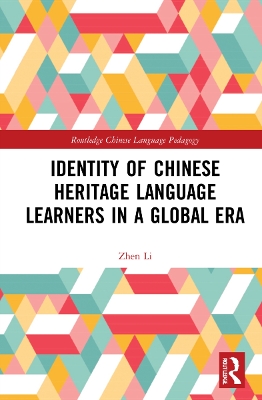 -10%
portes grátis
-10%
portes grátis
Identity of Chinese Heritage Language Learners in a Global Era
Li, Zhen
Taylor & Francis Ltd
08/2024
160
Mole
Inglês
9781138629318
15 a 20 dias
Descrição não disponível.
AUTHOR'S NOTE
List of Tables
List of Figures
1 INTRODUCTION
Heritage Language
Definition of HL Learners
Differences between HL and L2 Learners
Research Background
Chinese as a Heritage Language
CHL Speakers as Learners
Means of CHL Learning
Home Language Maintenance
HL Schools
Mixed CFL Classes
The Sociolinguistic Landscape of Hong Kong
The English Landscape
The Changing Linguistic Landscape
University CHL Students in Hong Kong
Rationale for Research
Research Question and Aims
2 UNDERSTANDING HL LEARNER IDENTITY
The Interactional Sociolinguistic Paradigm
The Sociopsychological Paradigm
The Poststructuralist Perspective
Understanding Identity in Narratives
The Intersection between Identity and Storytelling
The Co-construction of Identity in Narrative Interviews
Positioning Theory
An Integrated Framework for Understanding CHL Learner Identity
3 THE RESEARCH PROJECT
Epistemology
Narrative Inquiry
Establishing Rapport and Reciprocity
The Research Setting and Participants
Data Analysis
Trustworthiness
Ethical Issues
4 IDENTITY IN LANGUAGE LEARNING
The Narrative Events
Learning Experiences at Early Life Stages
Chinese Learning in School-based Contexts
Chinese Supplementary Schools Overseas
CFL Classes in Hong Kong K-12 Schools
Class Adaptation for Transnational Learners
Home Language Learning
Reconstructing Learner Identity
Peer Influence
Asian Pop Culture
Career Benefits and Identity-Related Issues
The University CFL classes
Summary
5 IDENTITY IN LANGUAGE USE
The Narrative Events
Multilingual Practices
Language Practices at Home
Language Socialisation at University
CHL Ideologies and Language Hierarchies
Cantonese and Mandarin
Traditional and Simplified Characters
Summary
6 IDENTITY IN SOCIAL EXPERIENCE
The Narrative Events
Before-and-Now: The Western-versus-Chinese
"I Just Feel More Comfortable with a Chinese"
"Culturally I Understand More Where They Are Coming From"
"They Still Live in the Sixties"
Here-and-Now: Local-versus-International
"Definitely the International"
"Like People from the Similar Backgrounds"
"We Are More Outgoing and We Have More Leadership Skills"
"They Are a Bit Stuck"
Summary
7 CONCLUSIONS
Agency and Investment Change in CHL learning
Language Practices in the Context of Superdiversity
Social Membership and Imagined Communities
Implications of the Study
Further Suggestions
REFERENCES
Appendix A: Interview Guide
Appendix B : Transcription Conventions
List of Tables
List of Figures
1 INTRODUCTION
Heritage Language
Definition of HL Learners
Differences between HL and L2 Learners
Research Background
Chinese as a Heritage Language
CHL Speakers as Learners
Means of CHL Learning
Home Language Maintenance
HL Schools
Mixed CFL Classes
The Sociolinguistic Landscape of Hong Kong
The English Landscape
The Changing Linguistic Landscape
University CHL Students in Hong Kong
Rationale for Research
Research Question and Aims
2 UNDERSTANDING HL LEARNER IDENTITY
The Interactional Sociolinguistic Paradigm
The Sociopsychological Paradigm
The Poststructuralist Perspective
Understanding Identity in Narratives
The Intersection between Identity and Storytelling
The Co-construction of Identity in Narrative Interviews
Positioning Theory
An Integrated Framework for Understanding CHL Learner Identity
3 THE RESEARCH PROJECT
Epistemology
Narrative Inquiry
Establishing Rapport and Reciprocity
The Research Setting and Participants
Data Analysis
Trustworthiness
Ethical Issues
4 IDENTITY IN LANGUAGE LEARNING
The Narrative Events
Learning Experiences at Early Life Stages
Chinese Learning in School-based Contexts
Chinese Supplementary Schools Overseas
CFL Classes in Hong Kong K-12 Schools
Class Adaptation for Transnational Learners
Home Language Learning
Reconstructing Learner Identity
Peer Influence
Asian Pop Culture
Career Benefits and Identity-Related Issues
The University CFL classes
Summary
5 IDENTITY IN LANGUAGE USE
The Narrative Events
Multilingual Practices
Language Practices at Home
Language Socialisation at University
CHL Ideologies and Language Hierarchies
Cantonese and Mandarin
Traditional and Simplified Characters
Summary
6 IDENTITY IN SOCIAL EXPERIENCE
The Narrative Events
Before-and-Now: The Western-versus-Chinese
"I Just Feel More Comfortable with a Chinese"
"Culturally I Understand More Where They Are Coming From"
"They Still Live in the Sixties"
Here-and-Now: Local-versus-International
"Definitely the International"
"Like People from the Similar Backgrounds"
"We Are More Outgoing and We Have More Leadership Skills"
"They Are a Bit Stuck"
Summary
7 CONCLUSIONS
Agency and Investment Change in CHL learning
Language Practices in the Context of Superdiversity
Social Membership and Imagined Communities
Implications of the Study
Further Suggestions
REFERENCES
Appendix A: Interview Guide
Appendix B : Transcription Conventions
Este título pertence ao(s) assunto(s) indicados(s). Para ver outros títulos clique no assunto desejado.
identity;CHL;Heritage;Narratives;Language Learning;Postcolonial;Transnational;Discourse;Migration;Experience;Diasporic communities;Heritage Language Learners;Chinese Heritage Language Learners;Pop Stars;Language Ideologies;Low Residential Stability;International Chinese Students;Hl Learning;School University Transition;Chinese Reading Ability;Multilingual Spaces;International Chinese;Cantonese Proficiency;International School;Investment Change;Sociolinguistic Spaces;International School Students;Van Langenhove;Native Chinese Speaker;Chinese Language Learning;Hybrid Language Practices;Multilingual Practices;Narrative Inquirer;Hl;Self-reported Progress;Common Language
AUTHOR'S NOTE
List of Tables
List of Figures
1 INTRODUCTION
Heritage Language
Definition of HL Learners
Differences between HL and L2 Learners
Research Background
Chinese as a Heritage Language
CHL Speakers as Learners
Means of CHL Learning
Home Language Maintenance
HL Schools
Mixed CFL Classes
The Sociolinguistic Landscape of Hong Kong
The English Landscape
The Changing Linguistic Landscape
University CHL Students in Hong Kong
Rationale for Research
Research Question and Aims
2 UNDERSTANDING HL LEARNER IDENTITY
The Interactional Sociolinguistic Paradigm
The Sociopsychological Paradigm
The Poststructuralist Perspective
Understanding Identity in Narratives
The Intersection between Identity and Storytelling
The Co-construction of Identity in Narrative Interviews
Positioning Theory
An Integrated Framework for Understanding CHL Learner Identity
3 THE RESEARCH PROJECT
Epistemology
Narrative Inquiry
Establishing Rapport and Reciprocity
The Research Setting and Participants
Data Analysis
Trustworthiness
Ethical Issues
4 IDENTITY IN LANGUAGE LEARNING
The Narrative Events
Learning Experiences at Early Life Stages
Chinese Learning in School-based Contexts
Chinese Supplementary Schools Overseas
CFL Classes in Hong Kong K-12 Schools
Class Adaptation for Transnational Learners
Home Language Learning
Reconstructing Learner Identity
Peer Influence
Asian Pop Culture
Career Benefits and Identity-Related Issues
The University CFL classes
Summary
5 IDENTITY IN LANGUAGE USE
The Narrative Events
Multilingual Practices
Language Practices at Home
Language Socialisation at University
CHL Ideologies and Language Hierarchies
Cantonese and Mandarin
Traditional and Simplified Characters
Summary
6 IDENTITY IN SOCIAL EXPERIENCE
The Narrative Events
Before-and-Now: The Western-versus-Chinese
"I Just Feel More Comfortable with a Chinese"
"Culturally I Understand More Where They Are Coming From"
"They Still Live in the Sixties"
Here-and-Now: Local-versus-International
"Definitely the International"
"Like People from the Similar Backgrounds"
"We Are More Outgoing and We Have More Leadership Skills"
"They Are a Bit Stuck"
Summary
7 CONCLUSIONS
Agency and Investment Change in CHL learning
Language Practices in the Context of Superdiversity
Social Membership and Imagined Communities
Implications of the Study
Further Suggestions
REFERENCES
Appendix A: Interview Guide
Appendix B : Transcription Conventions
List of Tables
List of Figures
1 INTRODUCTION
Heritage Language
Definition of HL Learners
Differences between HL and L2 Learners
Research Background
Chinese as a Heritage Language
CHL Speakers as Learners
Means of CHL Learning
Home Language Maintenance
HL Schools
Mixed CFL Classes
The Sociolinguistic Landscape of Hong Kong
The English Landscape
The Changing Linguistic Landscape
University CHL Students in Hong Kong
Rationale for Research
Research Question and Aims
2 UNDERSTANDING HL LEARNER IDENTITY
The Interactional Sociolinguistic Paradigm
The Sociopsychological Paradigm
The Poststructuralist Perspective
Understanding Identity in Narratives
The Intersection between Identity and Storytelling
The Co-construction of Identity in Narrative Interviews
Positioning Theory
An Integrated Framework for Understanding CHL Learner Identity
3 THE RESEARCH PROJECT
Epistemology
Narrative Inquiry
Establishing Rapport and Reciprocity
The Research Setting and Participants
Data Analysis
Trustworthiness
Ethical Issues
4 IDENTITY IN LANGUAGE LEARNING
The Narrative Events
Learning Experiences at Early Life Stages
Chinese Learning in School-based Contexts
Chinese Supplementary Schools Overseas
CFL Classes in Hong Kong K-12 Schools
Class Adaptation for Transnational Learners
Home Language Learning
Reconstructing Learner Identity
Peer Influence
Asian Pop Culture
Career Benefits and Identity-Related Issues
The University CFL classes
Summary
5 IDENTITY IN LANGUAGE USE
The Narrative Events
Multilingual Practices
Language Practices at Home
Language Socialisation at University
CHL Ideologies and Language Hierarchies
Cantonese and Mandarin
Traditional and Simplified Characters
Summary
6 IDENTITY IN SOCIAL EXPERIENCE
The Narrative Events
Before-and-Now: The Western-versus-Chinese
"I Just Feel More Comfortable with a Chinese"
"Culturally I Understand More Where They Are Coming From"
"They Still Live in the Sixties"
Here-and-Now: Local-versus-International
"Definitely the International"
"Like People from the Similar Backgrounds"
"We Are More Outgoing and We Have More Leadership Skills"
"They Are a Bit Stuck"
Summary
7 CONCLUSIONS
Agency and Investment Change in CHL learning
Language Practices in the Context of Superdiversity
Social Membership and Imagined Communities
Implications of the Study
Further Suggestions
REFERENCES
Appendix A: Interview Guide
Appendix B : Transcription Conventions
Este título pertence ao(s) assunto(s) indicados(s). Para ver outros títulos clique no assunto desejado.
identity;CHL;Heritage;Narratives;Language Learning;Postcolonial;Transnational;Discourse;Migration;Experience;Diasporic communities;Heritage Language Learners;Chinese Heritage Language Learners;Pop Stars;Language Ideologies;Low Residential Stability;International Chinese Students;Hl Learning;School University Transition;Chinese Reading Ability;Multilingual Spaces;International Chinese;Cantonese Proficiency;International School;Investment Change;Sociolinguistic Spaces;International School Students;Van Langenhove;Native Chinese Speaker;Chinese Language Learning;Hybrid Language Practices;Multilingual Practices;Narrative Inquirer;Hl;Self-reported Progress;Common Language

